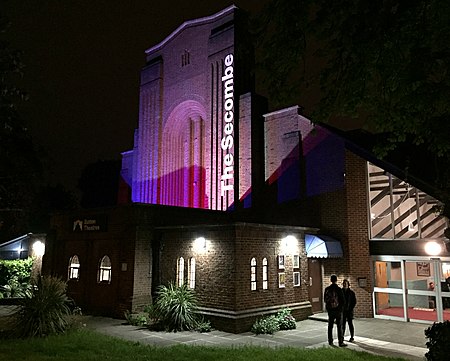Secombe Theatre
Art Deco architecture in LondonEngvarB from October 2017Sutton, LondonTheatres in the London Borough of Sutton

The Secombe Theatre (originally the Secombe Centre) was a theatre in Cheam Road, Sutton, Greater London. The theatre was opened in 1983 by the Welsh comedian Sir Harry Secombe, who lived in Sutton for over 30 years, and was named after him. The theatre went into administration and closed in August 2016. A petition to save Sutton's theatres was run in late 2016, gaining 1,350 signatures.
Excerpt from the Wikipedia article Secombe Theatre (License: CC BY-SA 3.0, Authors, Images).Secombe Theatre
Cheam Road, London Benhilton (London Borough of Sutton)
Geographical coordinates (GPS) Address Website External links Nearby Places Show on map
Geographical coordinates (GPS)
| Latitude | Longitude |
|---|---|
| N 51.361707 ° | E -0.197146 ° |
Address
Secombe Theatre
Cheam Road 42
SM1 2DY London, Benhilton (London Borough of Sutton)
England, United Kingdom
Open on Google Maps









